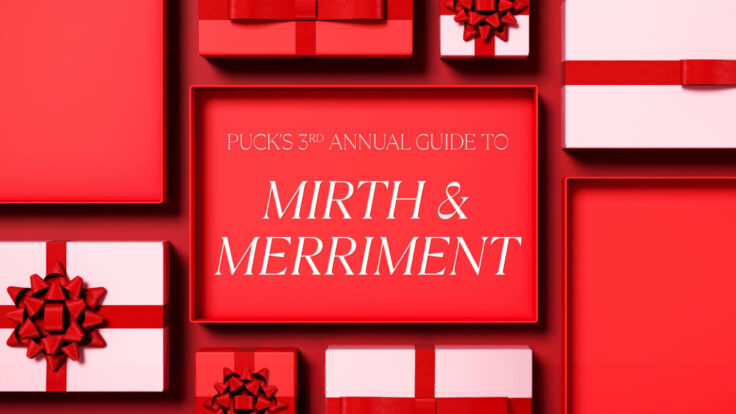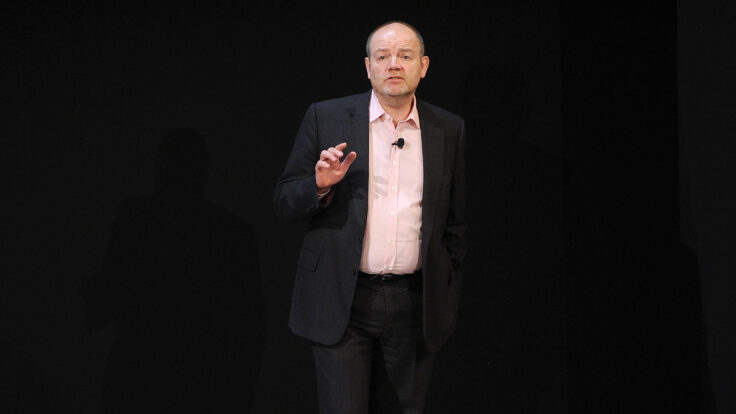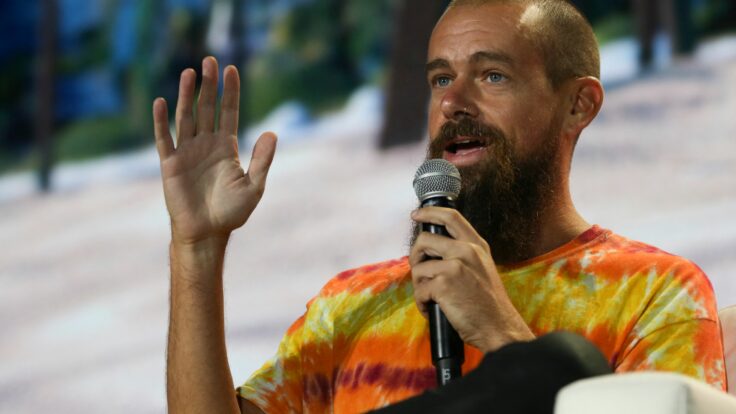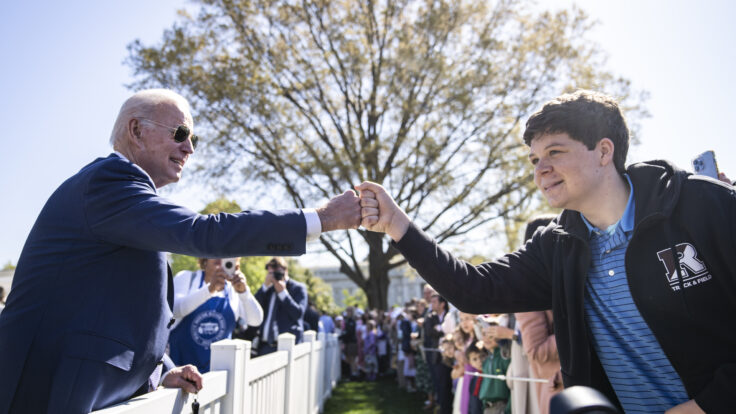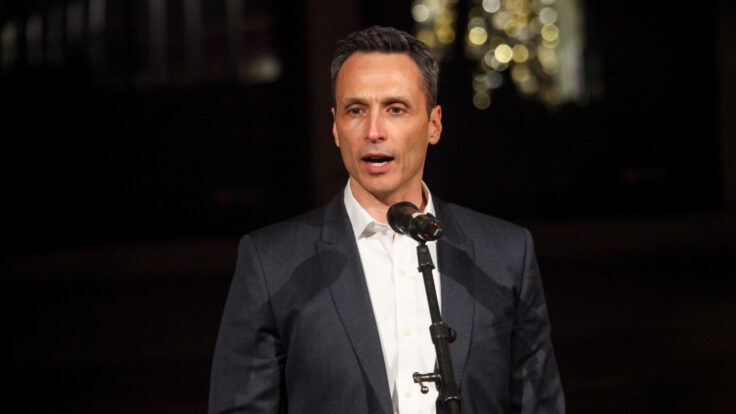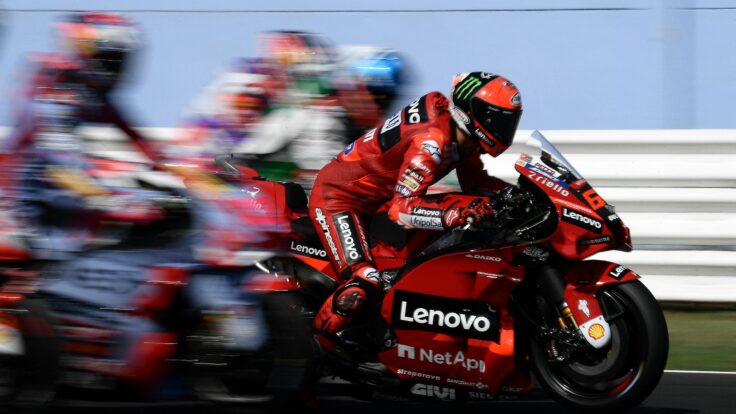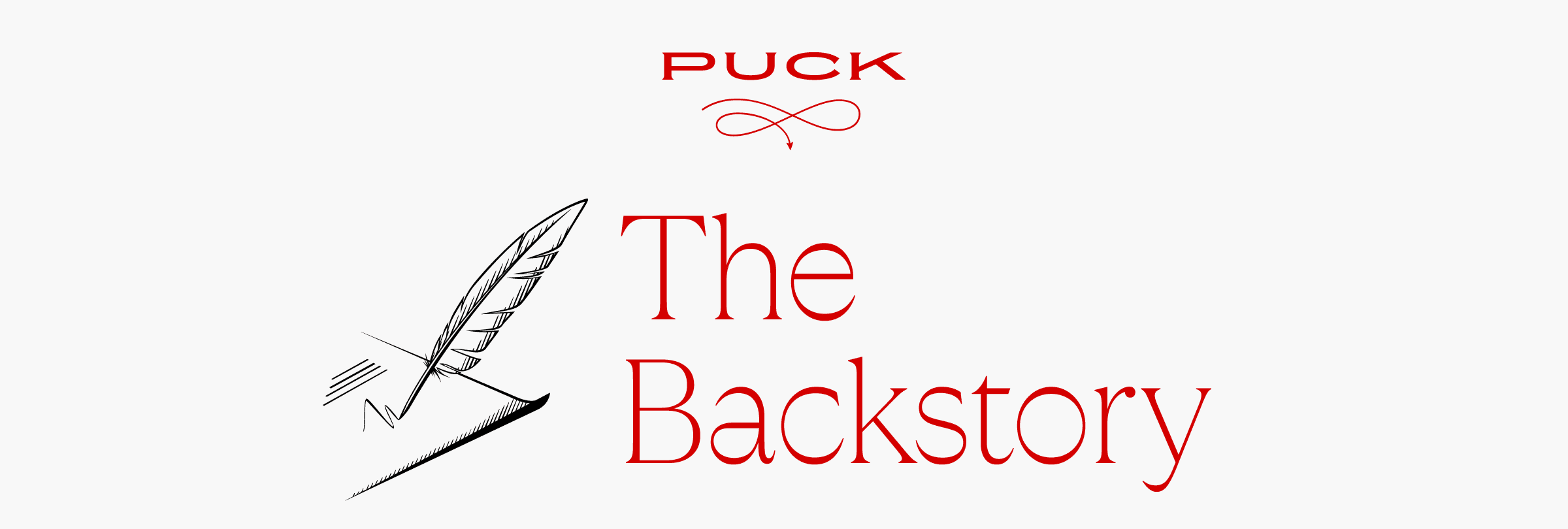 |

|
|
|
|
|
|
Good morning,
Thanks for reading The Backstory, a weekly composite of the best work emanating from Puck.
It was a truly incredible week: Dylan Byers broke the inside story on the civil war at The Washington Post; Matt Belloni revealed Shari Redstone’s last-minute waffling about selling Paramount, and Bill Cohan surfaced some late-stage potential deal-killers. Meanwhile, Eriq Gardner dug into a landmark Netflix lawsuit, Lauren Sherman detailed a Chanel exit, Rachel Strugatz outlined Estée Lauder’s latest M&A play, Marion Maneker surveyed Basquiat’s $125 million week, and John Ourand teased out a wrinkle in the NBA media rights sweepstakes. Down in Washington, John Heilemann previewed Trump’s post-verdict consequences, Julia Ioffe reported on Biden’s beleaguered national security team, Tina Nguyen checked in with Mike Johnson’s H.R. department, and Tara Palmeri chronicled the White House’s confusion on how to countenance their opponent’s rap sheet.
Check out these stories, and others, via the links below. And stick around for the backstory on how it all came together.
Also, if you missed Julia’s excellent interview with the filmmakers and subjects behind For Love & Life: No Ordinary Campaign, a documentary about former White House lawyer Brian Wallach’s battle against A.L.S. and his remarkable advocacy in the aftermath of his diagnosis, you can find the transcript here.
|
|
|
|
A MESSAGE FROM OUR SPONSOR
|

|
|
The BMW 7 Series is all luxury, all of the time. Learn more at BMWUSA.com.
|
|
|
FASHION:
Lauren Sherman explains what really went down with Virginie Viard at Chanel.
and…
Rachel Strugatz assesses Estée Lauder’s acquisition pivot.
ART WORLD:
Marion Maneker details how Basquiat became the new Picasso.
WALL STREET:
Bill Cohan unearths a last-minute Shari Redstone retrade.
HOLLYWOOD:
Matt Belloni scoops Shari’s weekend waffling and John Oliver’s agent retribution.
and…
Scott Mendelson analyzes the new Bad Boys tracking woes.
SILICON VALLEY:
Eriq Gardner dissects a first-of-its-kind Netflix settlement.
MEDIA:
Dylan Byers reveals what really went down at the Post.
and…
John Ourand nails down the secret ingredient of the NBA auction.
WASHINGTON:
John Heilemann anticipates the real consequences for Trump.
and…
Tara Palmeri digs into the White House’s flat-footed response to the verdict.
and…
Julia Ioffe documents the burnout on Biden’s NatSec team.
and…
Abby Livingston chronicles Larry Hogan’s sudden crisis.
PODCASTS:
🚨🚨 New show alert!: Heilemann and prosecutor Andrew Weissmann discuss Trump’s sentencing on Impolitic.
and…
Matt and Michael Kassan get into Netflix’s ad journey on The Town.
and…
Lauren remembers the magazine era on Fashion People.
and…
Tara and Andrew Yang survey the third-party mess on Somebody’s Gotta Win.
and…
Bill and Dylan chew over David Ellison’s Paramount endgame on The Powers That Be. |
|
|
| The Medium Is the Message |
|
| Early in my career, as a twentysomething editor at The New York Times, the workday often ended late, some time after 8 p.m., and was often followed by a brief trip down the elevator and through the lobby to the back entrance of Wolfgang’s—the steakhouse that occupied a retail space in the Times Building at 620 Eighth Ave. I was a part of a tight-knit group of journalists and editors and digital novices who loved what we did, and often needed an hour or so to chew it over before heading to the subway. We’d devour those decadent homemade potato chips—their pungent smell permeated the whole joint—while drinking Manhattans and philosophizing about where the industry was heading.
This was around the time, of course, when what used to be called print media was experiencing the first pangs of existential dread—the ones that had been endured years earlier by the music industry and would eventually ripple through linear television and Hollywood. I’d grown up in the magazine industry, once a thriving concern that, it was becoming clear, consumers simply didn’t covet any longer. The long lead times and expensive fixed costs, among other issues, were prohibitive in an era when readers had myriad other options.
Some limitations were secular, others stemmed from culture and a failure of imagination. At the Times Magazine, during those fraught years of the Great Recession, editors had to select feature stories and covers weeks and months before they hit the Sunday paper bundle and internet. How in the world could we predict topics that would be relevant in the future? Our best guesswork could be upended by a last-minute newsbreak or unforeseen event. It was just another headache in an industry filled with them.
What’s more: Magazines had been bound by the notion that they needed to continually mix up their coverage areas to serve as narrow and broad an audience as possible. If you put, say, Hillary Clinton on the cover of the magazine one week, you probably couldn’t do that again—according to this perverse logic—for a couple years. If you ran a professional athlete on the cover, you wouldn’t put another jock on for months. If you even pitched such a notion in an ideas meeting, some grizzled older colleague would surely say, “We just did that,” and the room would hum with agreement.
As a result, editors settled on a production line of evergreen stories that were manufactured to be broadly appealing but were almost parodic. One that I recall from that era was about what whales might be telling us humans. (In typical Times hide-covering, we couldn’t definitively declare if they were sending us these subaquatic signals or not.) Anyway, a lot of exogenous factors killed the magazine business, but a lack of creativity certainly contributed.
Amid all this, the best piece of editorial advice I ever received came from one of those work postmortems at Wolfgang’s. I was talking with Hugo Lindgren, then the editor-in-chief of the Times Magazine and one of the great practitioners of the art form, about a whole host of work items, imagining the future of the business, and wondering about my place in it. Then Hugo made a side comment that I’ll never forget. Magazines were about connection, he reminded me—bringing an audience into a world they could never access otherwise. The medium was going to change, obviously, but the underlying message never would. |
|
|
| Even as I comb my own gray hairs, I often think of that line, which defines so much of the work here at Puck. As you well know, Puck has its leitmotifs and obsessions—and we fully embrace them. These are our way of connecting with our audience and allowing them to access otherwise inaccessible terrain.
A number of those fixations were on display this week. Just at the moment when it seemed that Shari Redstone was finally ready to part ways with Paramount Global, her family heirloom, she appears to be getting a little jittery. In Shari’s Moment of Hard Truth, Matt Belloni reveals some of Redstone’s last-minute wavering. And in The Shari Soap Opera’s Final Twist, Bill Cohan breaks the news of a last-minute retrade that might impede the transaction. After all, so many deals die with age.
Meanwhile, as the biggest media C.E.O.s compete for a slice of Adam Silver’s $76 billion pie, John Ourand articulated one underappreciated element of the deal: So much of the pay TV and streaming economy hinges on these game packages because there won’t be any other major rights on the block for years. In his excellent piece, Is There Life After the NBA?, John brilliantly answered his own rhetorical question. There is vitality for some, but not for others.
And, lastly, so much of the week’s work coalesced around the constant executive shuffling and deal flow that are endemic to an economy completing a digital transformation. In Estée’s $3.6 Billion Revitalizing Cream, Rachel Strugatz chronicled the latest chapter in a historic business’s attempt to catch up with the times. Similarly, Lauren Sherman’s breathtaking Heaven and Chanel dissects the dawn of a new era at the post-Lagerfeld, and now post-Virginie Viard, maison as it redefines its identity.
But if you only have time to read one piece this weekend, I’d turn your attention to Dylan Byers’ excellent ‘Post’ Mortem. The Post, like the Times I knew nearly 15 years ago, is trapped in a moment of existential ennui—longing for a previous era, able to comprehend that it needs to pivot, but reluctant to take the leap. It’s a story about people and corporations as old as time. And in many ways, it is the story of our age, and precisely what you should expect from Puck.
Have a great weekend,
Jon |
|
|
|
 |
|
|
|
Need help? Review our FAQs
page or contact
us for assistance. For brand partnerships, email ads@puck.news.
|
|
You received this email because you signed up to receive emails from Puck, or as part of your Puck account associated with . To stop receiving this newsletter and/or manage all your email preferences, click here.
|
|
Puck is published by Heat Media LLC. 227 W 17th St New York, NY 10011.
|
|
|
|







